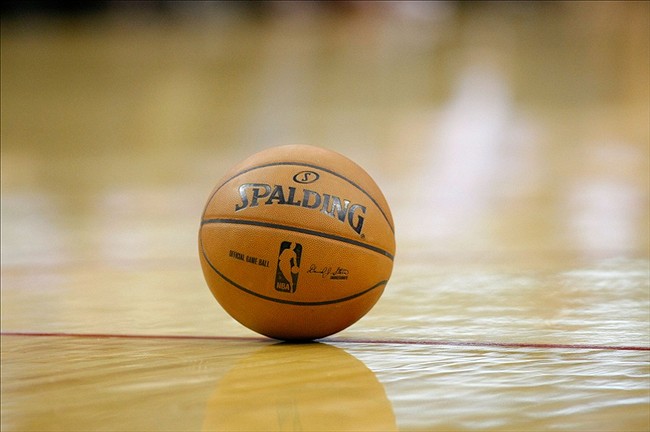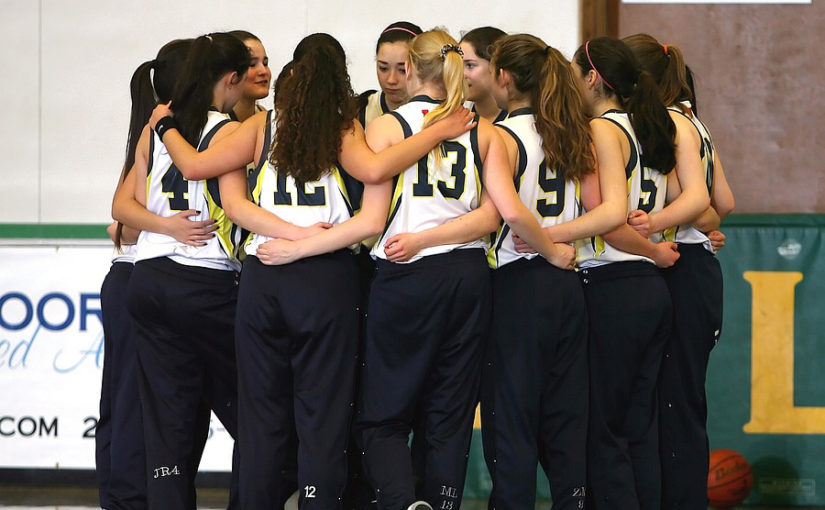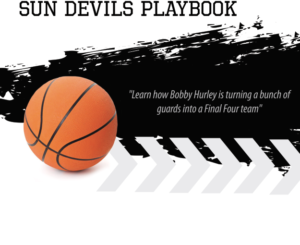Basketball: Get running off opponent’s missed free throws
In keeping with my coaching theory for controlling tempo and placing constant pressure on opposing defense’s, I devised a defensive free-throw alignment that would accomplish this. Our teams have had a lot of success with this foul-line formation over the years. By design, it allows for a multitude of positive possibilities.
- The basic alignment keeps the defense spread out, forcing them to adjust to a free-throw formation they’ve seldom seen.
- Keeping your best ball handlers in a tandem formation makes it more difficult to defend.
- Fast-breaking off either a made or missed free throw keeps the opponents from setting up any type of effective full-court pressure defense.
This scheme also can easily adjust to any moves your opponent may use. You can, for example, have your best two guards in the half-court position, switch assignments, bring them up diagonally or have them break deep for a long pass, depending on your opponent’s adjustments. It’s easy to install into your system, and your players enjoy the up-tempo style of play.
Middle fast break
DIAGRAM 1 shows your basic alignment. DIAGRAMS 2-3 show an example of a fast break off a missed free throw when 3 secures a long rebound which is called the middle fast break.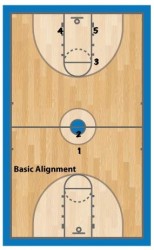
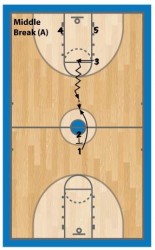
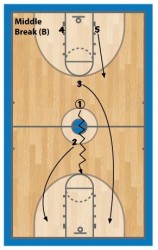
DIAGRAM 1: Basic Alignment.
DIAGRAM 2: Middle fast break (A). 2 screens for 1, who breaks toward the middle and receives a pass from 3.
DIAGRAM 3: Middle fast break (B). 1 drives the middle, while 2 and 3 fill the lanes. 5 is a trailer.
Sideline fast break
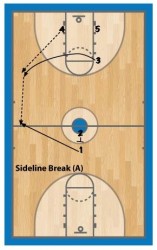
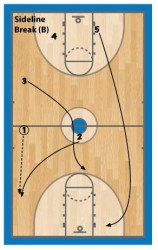
DIAGRAMS 4-5 show our sideline break when 4 secures the rebound. If 5 grabs the rebound, we flip-flop assignments.
DIAGRAM 4: Sideline break (A). 4 rebounds and passes to 3, who is sprinting to the sideline. 2 screens for 1, who breaks past half court to the sideline.
DIAGRAM 5: Sideline break (B). 3 passes to 1, then breaks to the middle of the floor. 1 passes to 2 on the sideline, while 5 fills the outside lane.


